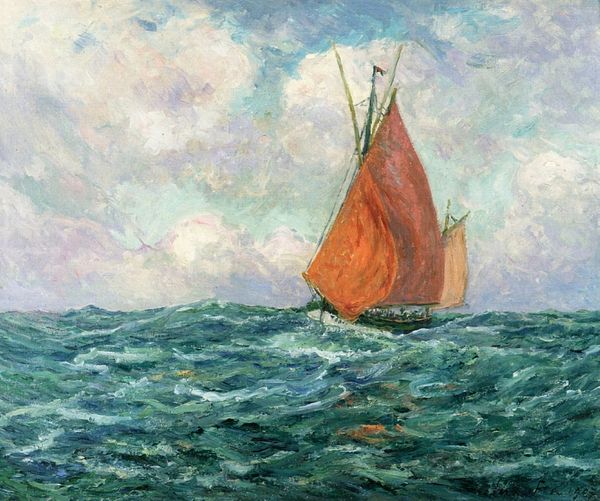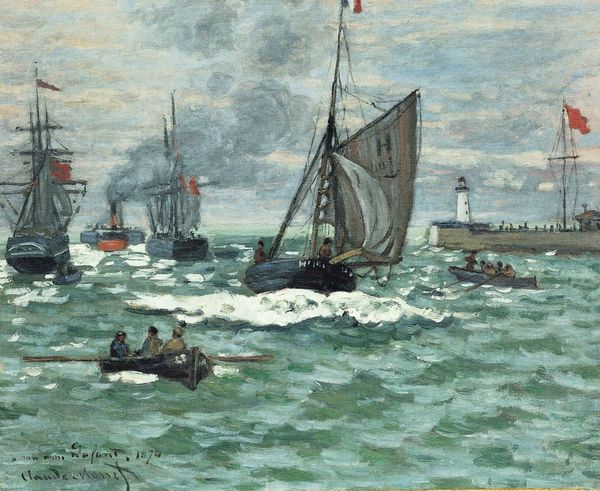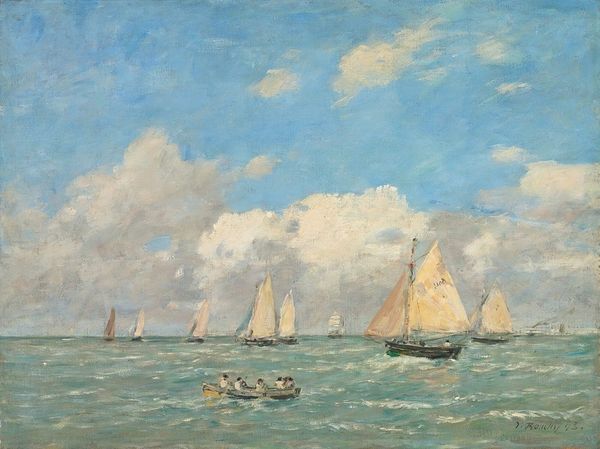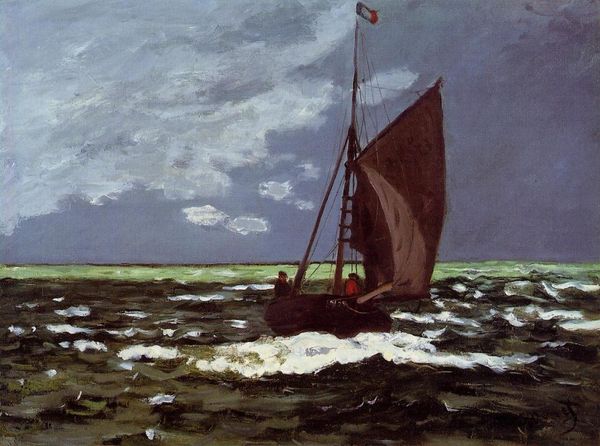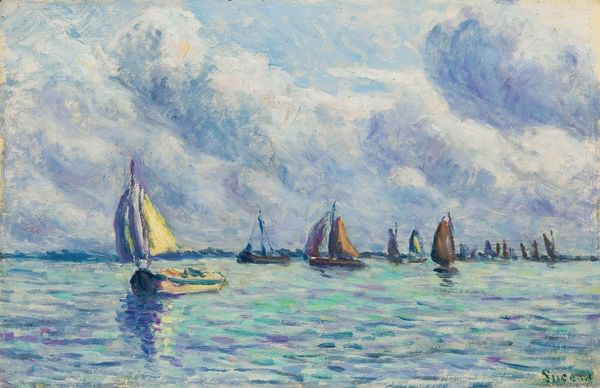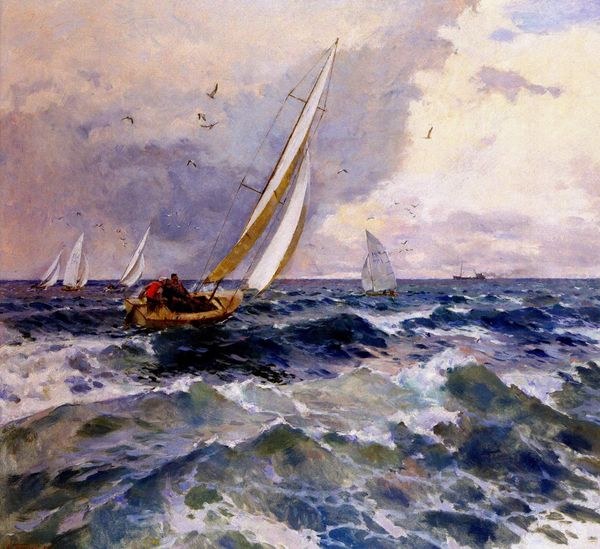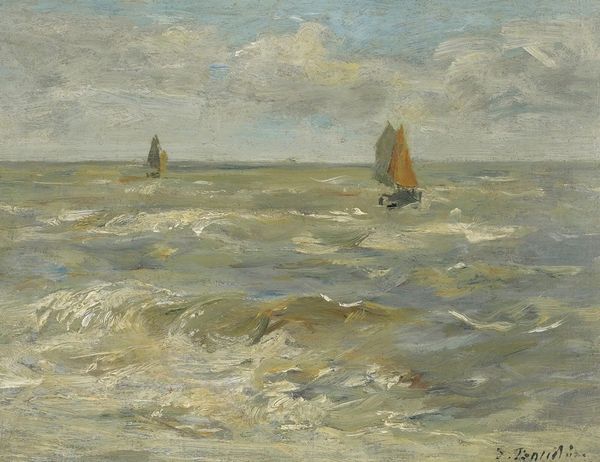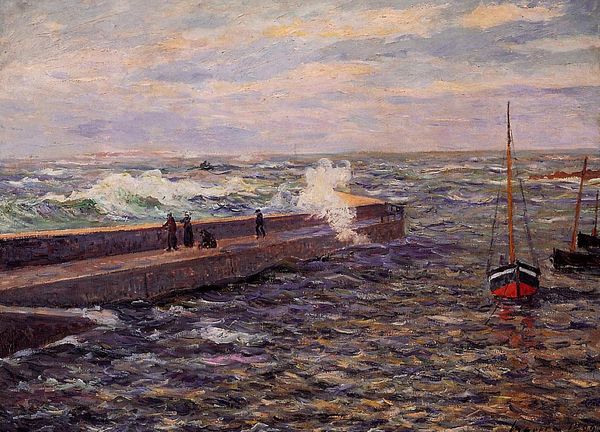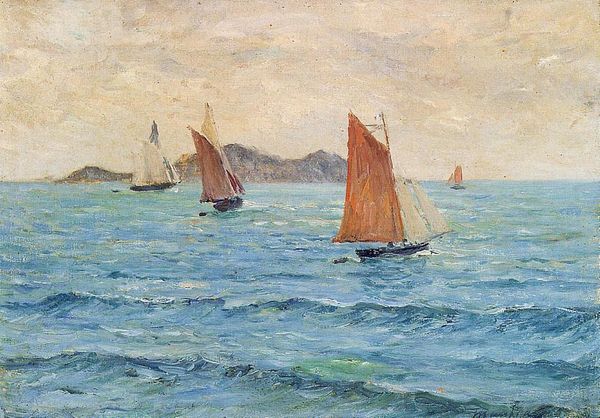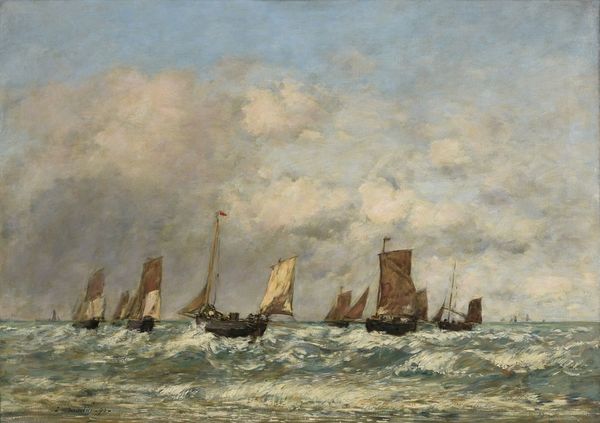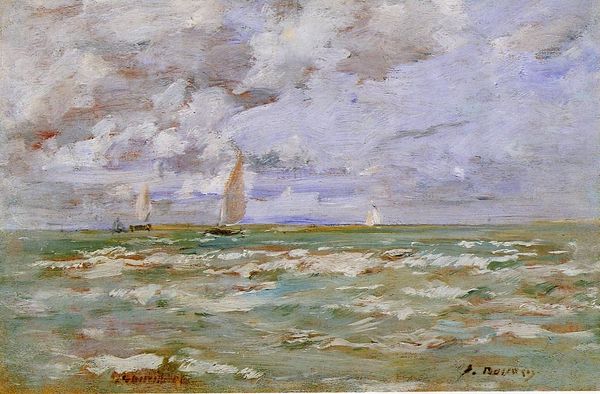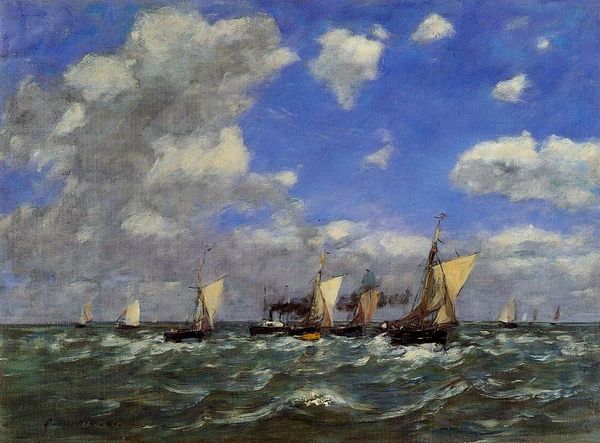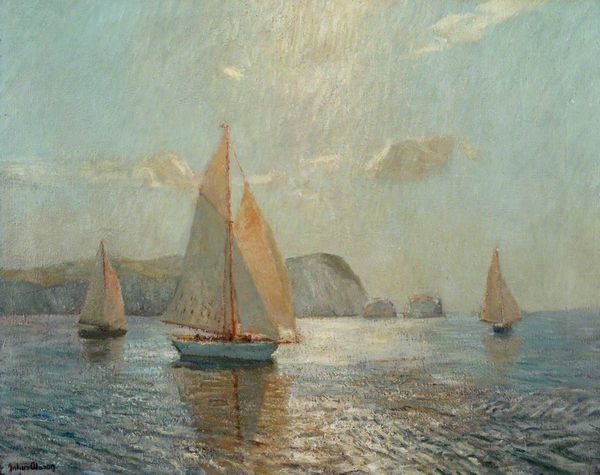
Copyright: Public domain
Curator: This painting, "Back to Fishing boats in Belle-Isle-en-Mer" by Maxime Maufra, created around 1910, immediately conveys a sense of turbulent energy. Editor: Absolutely, there's something quite visceral about the brushstrokes, isn't there? The impasto creates a wonderfully textured surface that evokes the rawness of the sea and the boats braving it. You can almost feel the wind and spray. Curator: Maufra, working in that impressionist tradition and doing so en plein-air, uses a lot of impasto as you noticed, allowing him to capture a fleeting moment and light with quickness and precision, so think about his materials - paint and canvas. Beyond this, considering that Belle-Île was a thriving port for fishermen, we might wonder about the conditions in which these workers operated. How reliant were they on weather, for example? Editor: The bright orange sails offer a focal point amid the grey and green tones, highlighting not only the boats themselves but also, by extension, the labour of the individuals onboard these vessels, their everyday struggles to harness natural resources in harsh conditions. It speaks to the industrial history of this time. Curator: Exactly. The scale, too, I think, hints at a power dynamic, nature towering over those human actors who nevertheless attempt to traverse this unpredictable world. It also makes me consider how marine paintings functioned in the context of burgeoning tourism and ideas of Brittany, in general. Editor: You make an important point about Brittany and that perception - this locale quickly emerged into a place both inside and outside modern life - not too dissimilar to the anxieties concerning periphery and center within Parisian cultural institutions that decided to acquire or promote artwork by Maufra, or artists like him! The rough, expressive brushwork is not just about light and movement. It serves to monumentalize the everyday experience of work. Curator: It gives us a clear window onto the maritime and socio-political aspects of this coastal area at the time, which otherwise may have gone unrecorded. Editor: Looking at "Back to Fishing boats," I see the convergence of human and environmental forces made manifest through the manipulation of pigment. Curator: And, I'd say the role of institutional taste-makers helped shape Maufra’s enduring vision of turn-of-the-century Brittany.
Comments
No comments
Be the first to comment and join the conversation on the ultimate creative platform.
